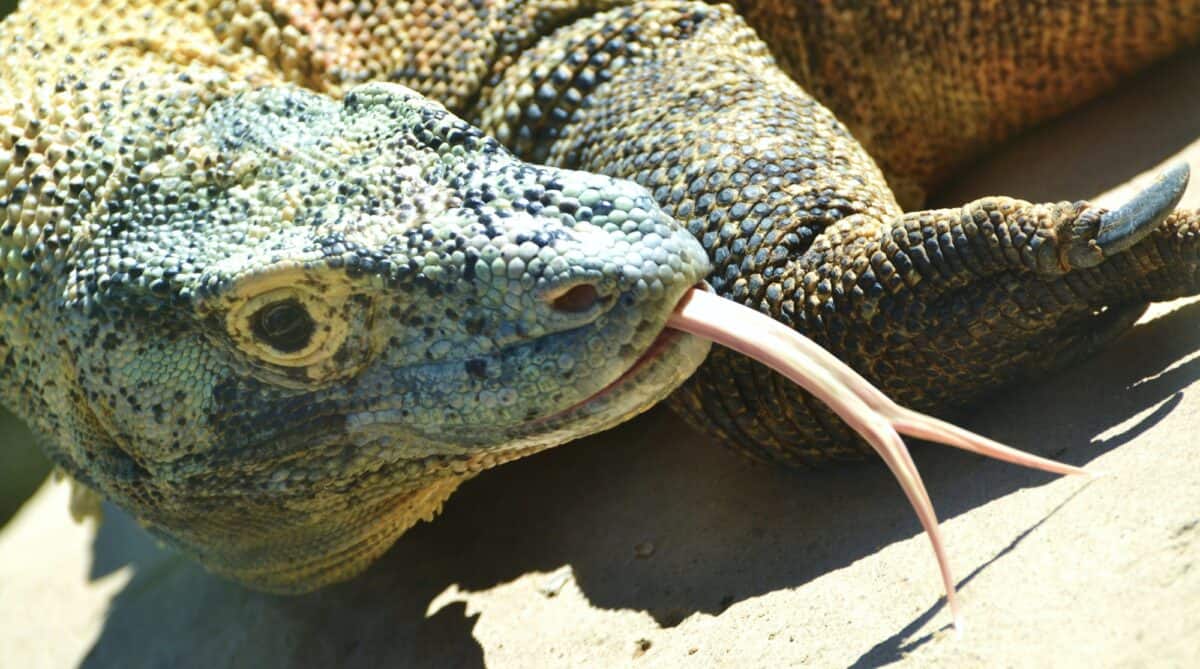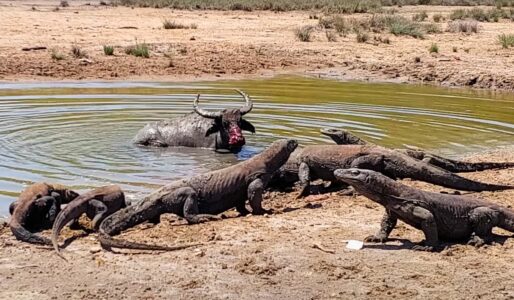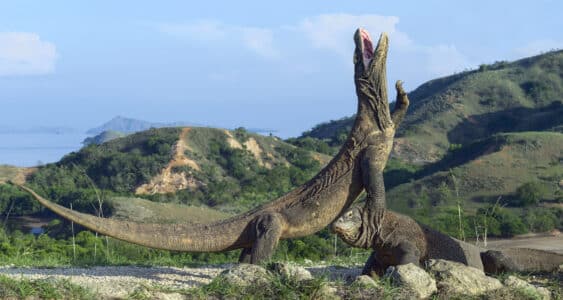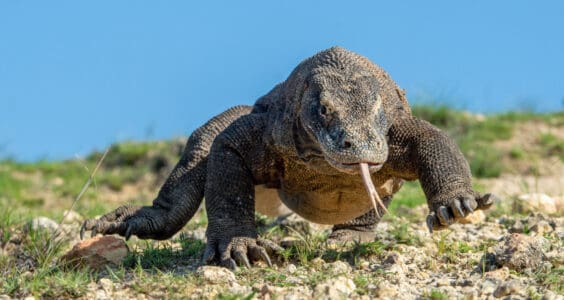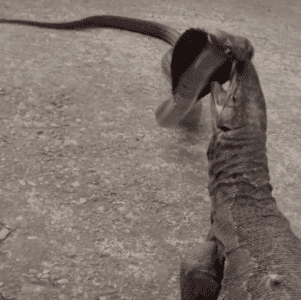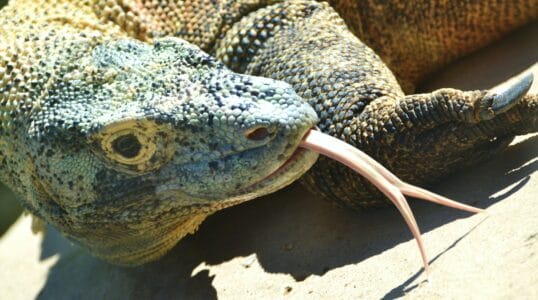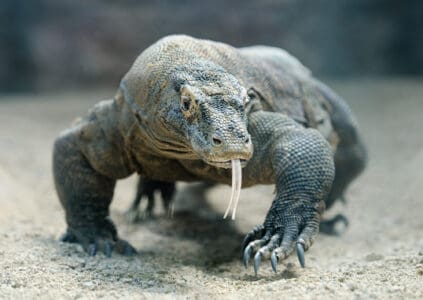Komodo dragons! The first animal that pops into my mind when I think of Monitor Lizards. However, this impressive reptile group belonging to the Varandiae family has about 80 recognized species.
Monitor Lizards are characterized by their well-developed limbs, long necks, claws, and tails. And their immense strength! These forked-tongued reptiles are mostly carnivorous with only a few species sticking to a herbivorous diet. Monitor Lizards use venom they secrete from glands in their lower jaws to subdue their prey. Let’s have a deeper look into these powerful lizards!
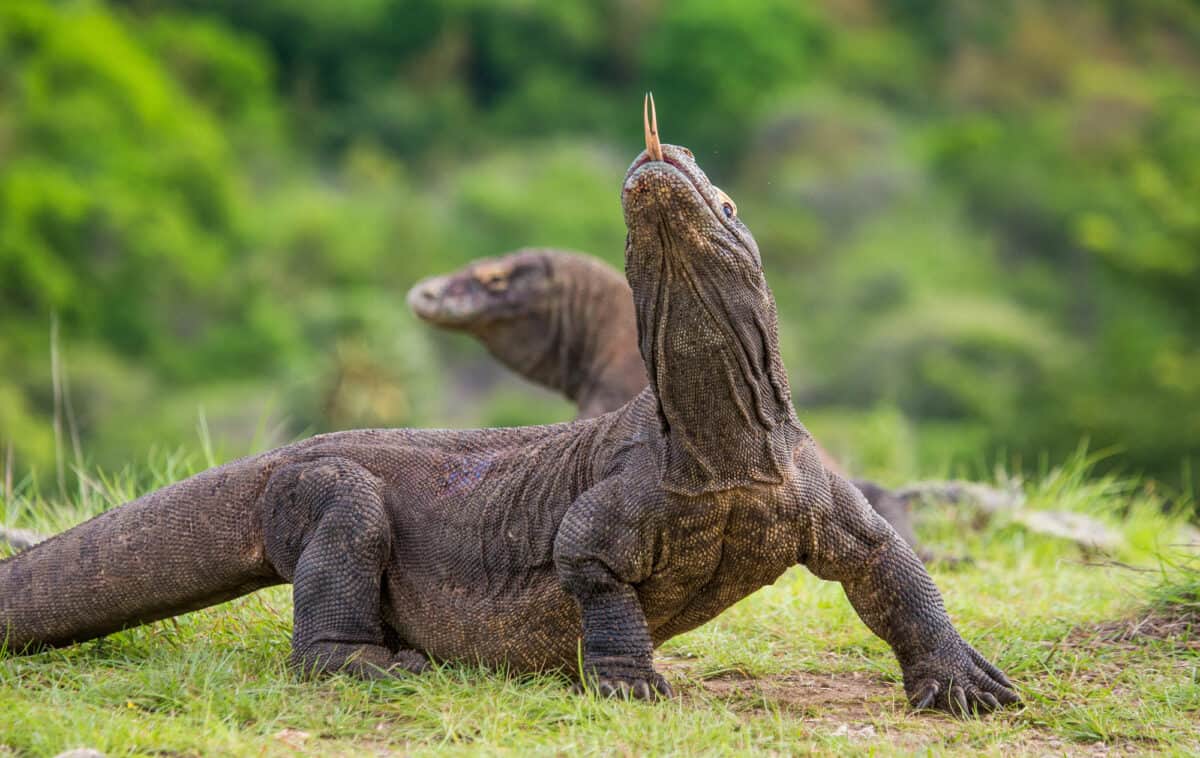
Some Quick Monitor Lizard Facts
| Scientific Name | Family Varanidae; Varanus spp. or Lanthanotus borneensis |
| Class | Reptile |
| Size | 7.9 inches to over 10 feet |
| Conservation Status | 10 species Endangered, 2 species Near Threatened, 2 species Vulnerable, 1 species Critically Endangered, and the rest Least Concern according to the IUCN Red List |
Monitor Lizard Overview
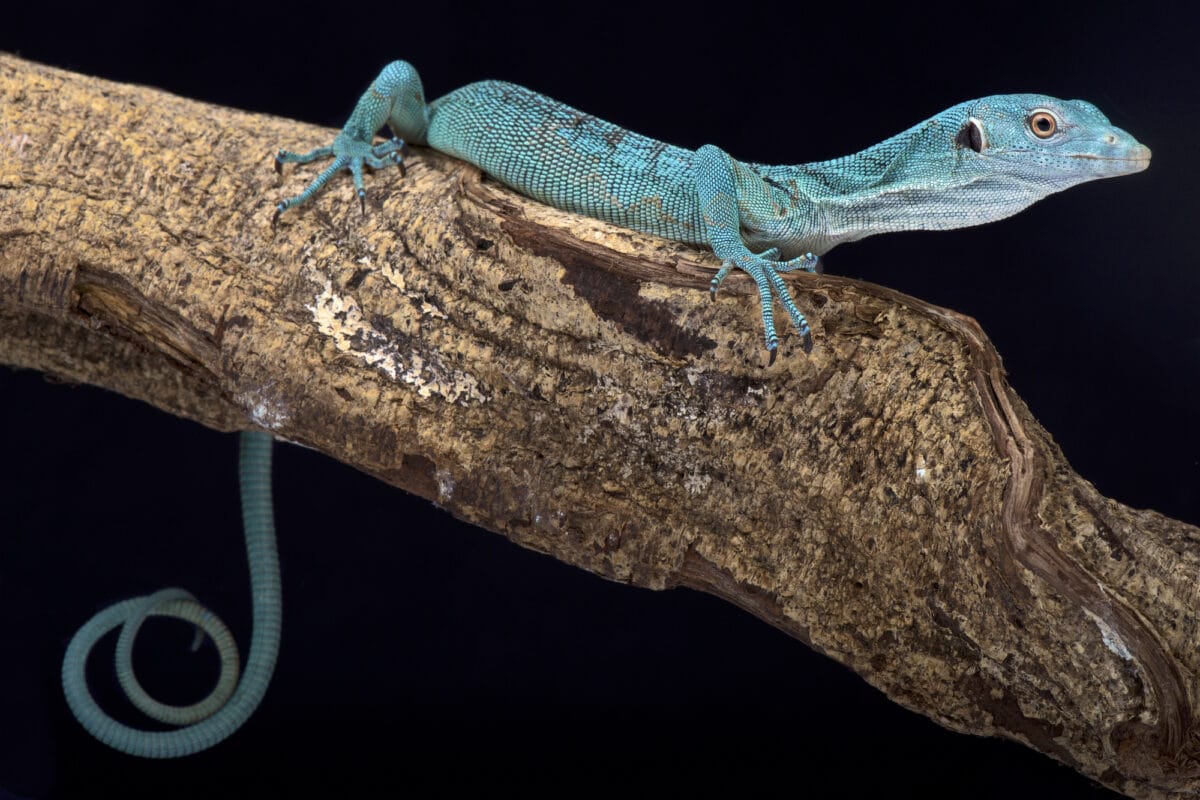
Where do they live?
These reptiles can be found in sub-Saharan Africa, Asia, Australia, and the southwestern Pacific Islands. Many species can be found in rainforests and jungles, and some species in aquatic regions, and others in dry and hot climates. So, we can see that these lizards live in many different environments.
The Komodo Dragon is native to the Komodo island in Indonesia, and can only be found there!
What do they eat?
All reptiles in this group are carnivores, except for two species: the Varanus bitatawa’s diet primarily consists of fruit and the Varanus olivaceus eats fruit as well as other animals.
The carnivores in the group eat insects, spiders, other lizards, birds, and small mammals. The Komodo Dragon is one example that is able to eat much larger prey, and has been known to feast on mammals as large as the water buffalo!
How do they reproduce?

Most of the monitor lizards are oviparous. This means that they need sexual fertilization and lay eggs from which offspring hatch. These lizards lay anything between 7 and 38 eggs at a time, and keep their eggs safe in burrows or tree hollows.
Some species, like the Komodo Dragon, can reproduce through a process called parthenogenesis. This is a fancy way of saying that they can reproduce asexually, and eggs can develop embryos without needing fertilization.
Social Behavior
Like most other reptiles, these lizards tend to live solitary lives and only interact with each other during the breeding season. However, in some species, juveniles will stick together for a while until they are self-sufficient.
Many species are extremely territorial and active hunters – similar to mammals of the same size. Some, like the Komodo Dragon, are ferocious and will even kill one of their own if there is reason to!
Monitor Lizard News
-

Monitor Lizard And Cobra Have A Standoff
-

Buffalo Vs. An Army of Komodo Dragons
-

Mother Buffalo Tries to Save Baby From Komodo Dragons
-

Watch: The Biggest Komodo Dragon Ever Recorded Here (more than 10 feet long)
-

Watch: Komodo Dragon Defeated By Moray Eel
-

Watch: Komodo Dragon Swallows Baby Goat In Seconds
-

Watch: Komodo Dragon Devours Massive Moray Eel
-

Watch: Komodo Swallowed Whole Goat Kid
-

Watch: Komodo Dragon Eat Shark Alive
-

Watch: Monitor Lizard vs Cobra
-

How To Treat A Komodo Dragon Bite
-

Difference Between The Komodo Dragon & Monitor Lizard
How Venomous Are Monitor Lizards?
All monitor lizards are venomous, just to different extents. They secrete their venom from the glands in their bottom jaws to subdue their prey.
Some species’ venom is a coagulant, meaning that the venom prevents blood from clotting and the wound would bleed much more than usual. This also results in a burning sensation around the wound and low blood pressure in the victim. Luckily these are not fatal to humans. Other species, like the Desert Monitor and the Komodo Dragon’s venom, have a strong neurotoxic effect on their victims – fatal to even humans!
Monitor Lizard Pictures
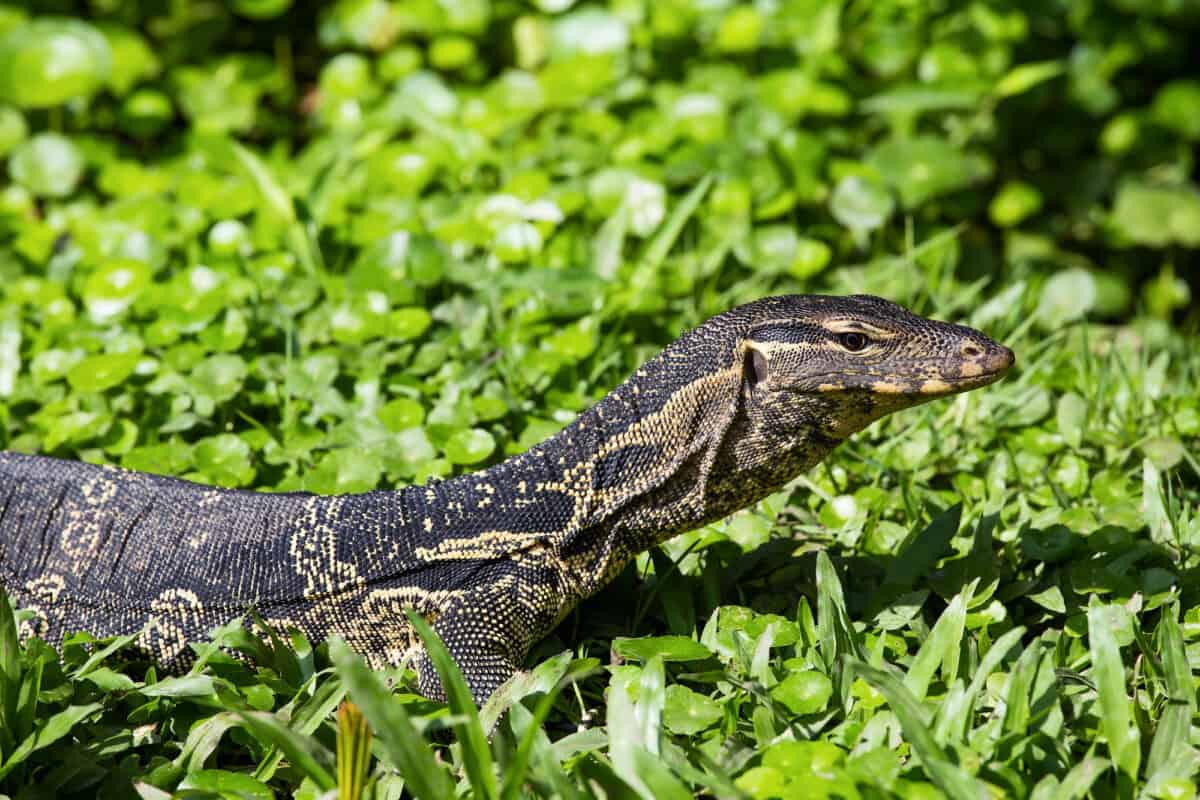
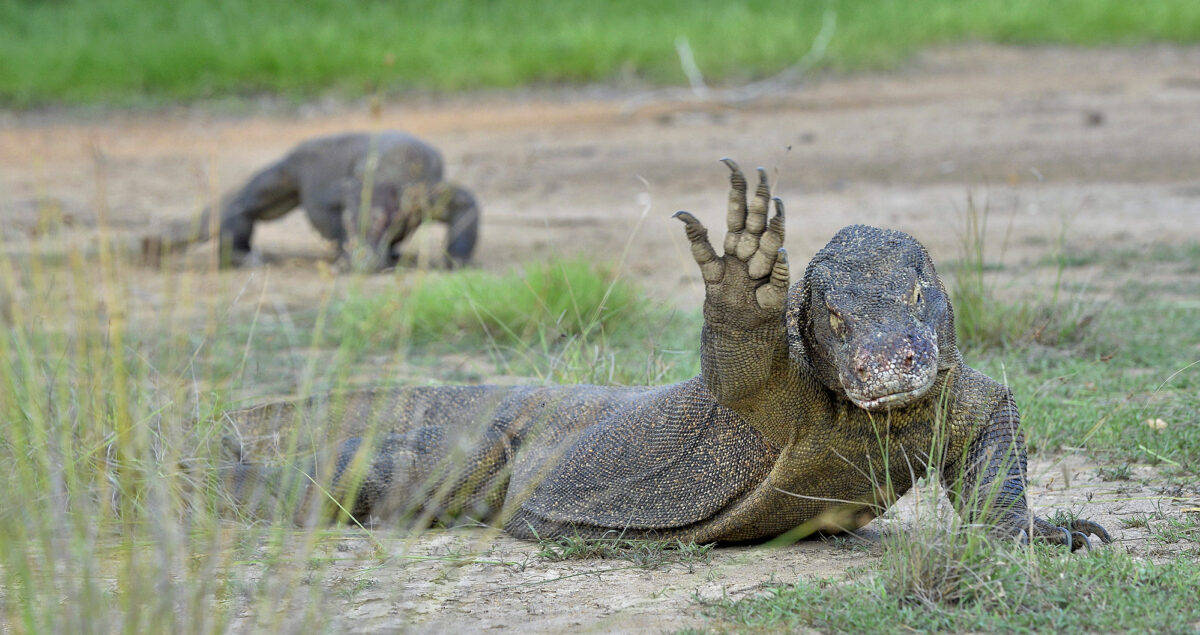
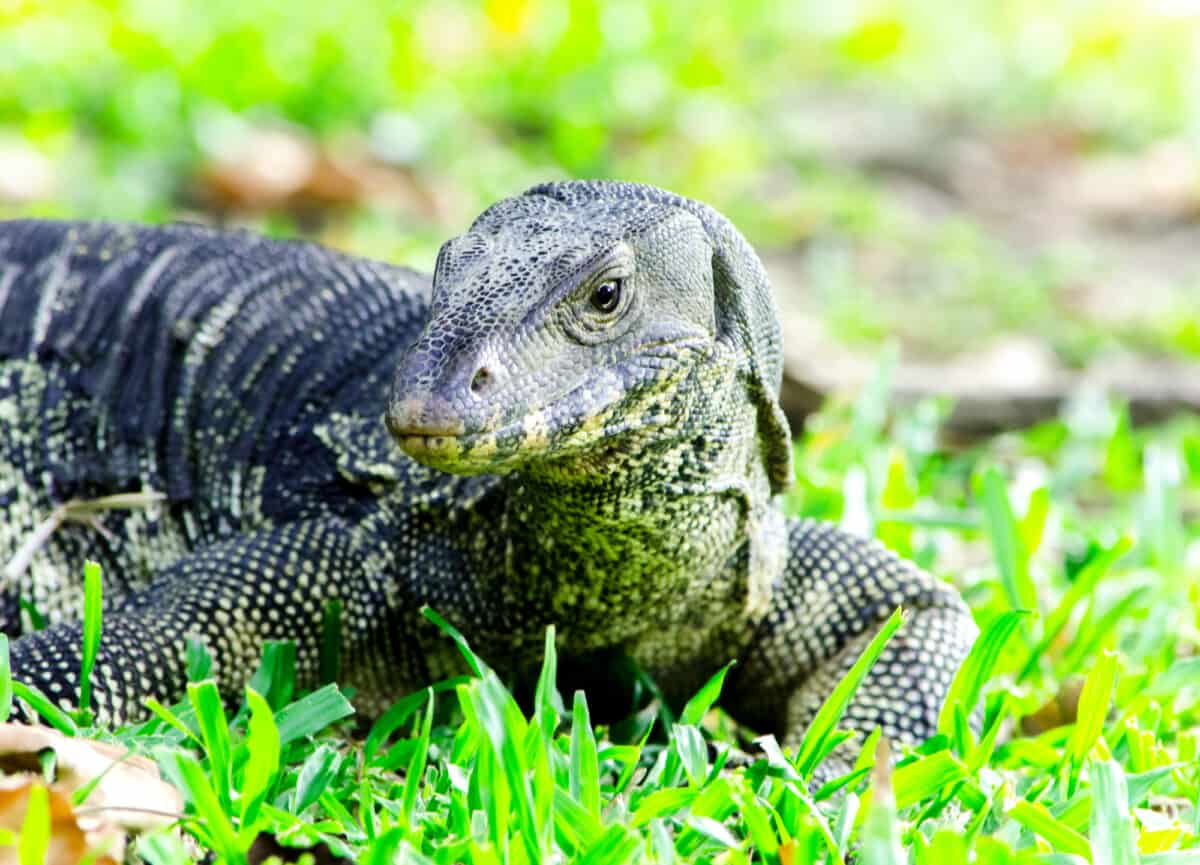
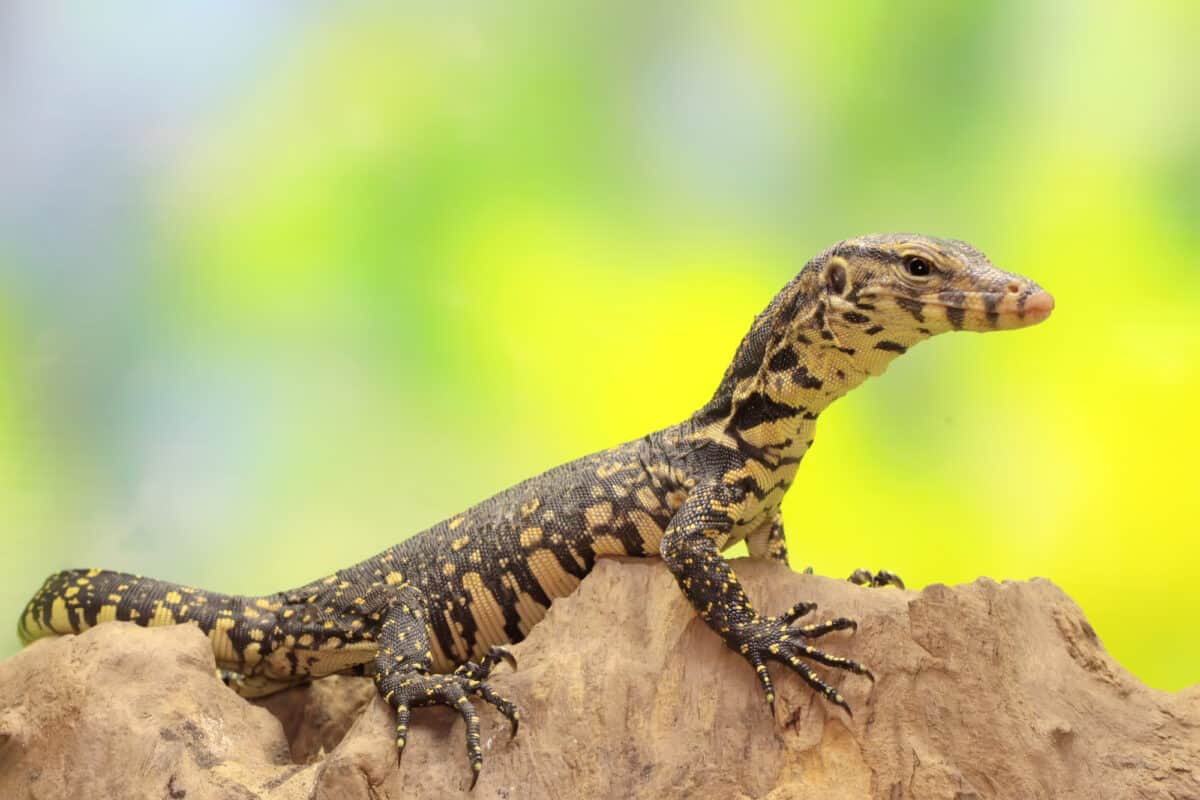
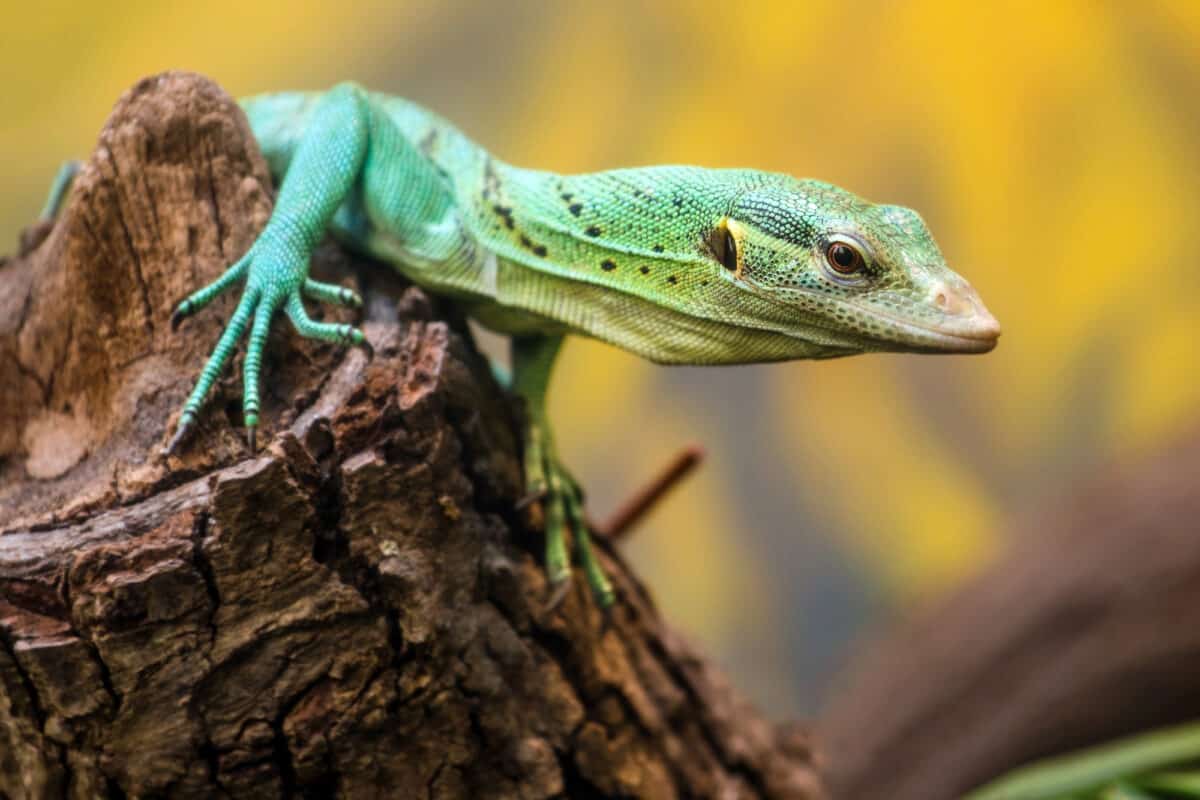
Monitor Lizard History & Cultural Importance
Monitor lizards, as scary as some of them can be, have been exploited by humans for many years. And not only in both the legal and illegal pet trade.
Some are poached for their organs to be used in traditional medicines. Others believe that eating their livers and tongues acts as an aphrodisiac. However, there is no scientific evidence supporting either of these claims. More believable uses for monitors include their skin as leather for various objects and their meat as food, in some countries as a staple and in others as a delicacy.
Local communities believe that the Komodo Dragon signifies strength and power. They also believe that the Komodo Dragon has supernatural powers received from ancestral spirits and guards over their islands.
Monitor Lizard FAQ
The Komodo Dragon, Varanus komodoensis, takes this title at 10 feet and an average of 150 pounds! These reptiles are native to the Komodo Island of Indonesia and are known for the large prey that they easily take down. So not only are they the largest, but I would say scariest too!
Their common name is derived from the Latin word ‘monere’ which means ‘to warn’. There are many disputes as to why this name was given to these lizards, some say it is because of their habit of standing on their hind legs to monitor their surroundings. Others claim that their name is a warning to people due to their venom and sometimes violent nature.
You might have noticed that their tongues look similar to those of snakes. This shape allows them more accuracy in locating their prey’s scent during their hunting pursuits.
Learn More About Monitor Lizards
Jump to our dedicated Reptile page to explore other fascinating animals.
Newest Category: Monitor Lizards
- Watch As Dogs Conduct An Orchestra – With Their Tails - April 24, 2024
- Rescue Puppy Becomes A Style Icon - April 23, 2024
- Proof That The Cat Distribution Theory Is Real - April 22, 2024

